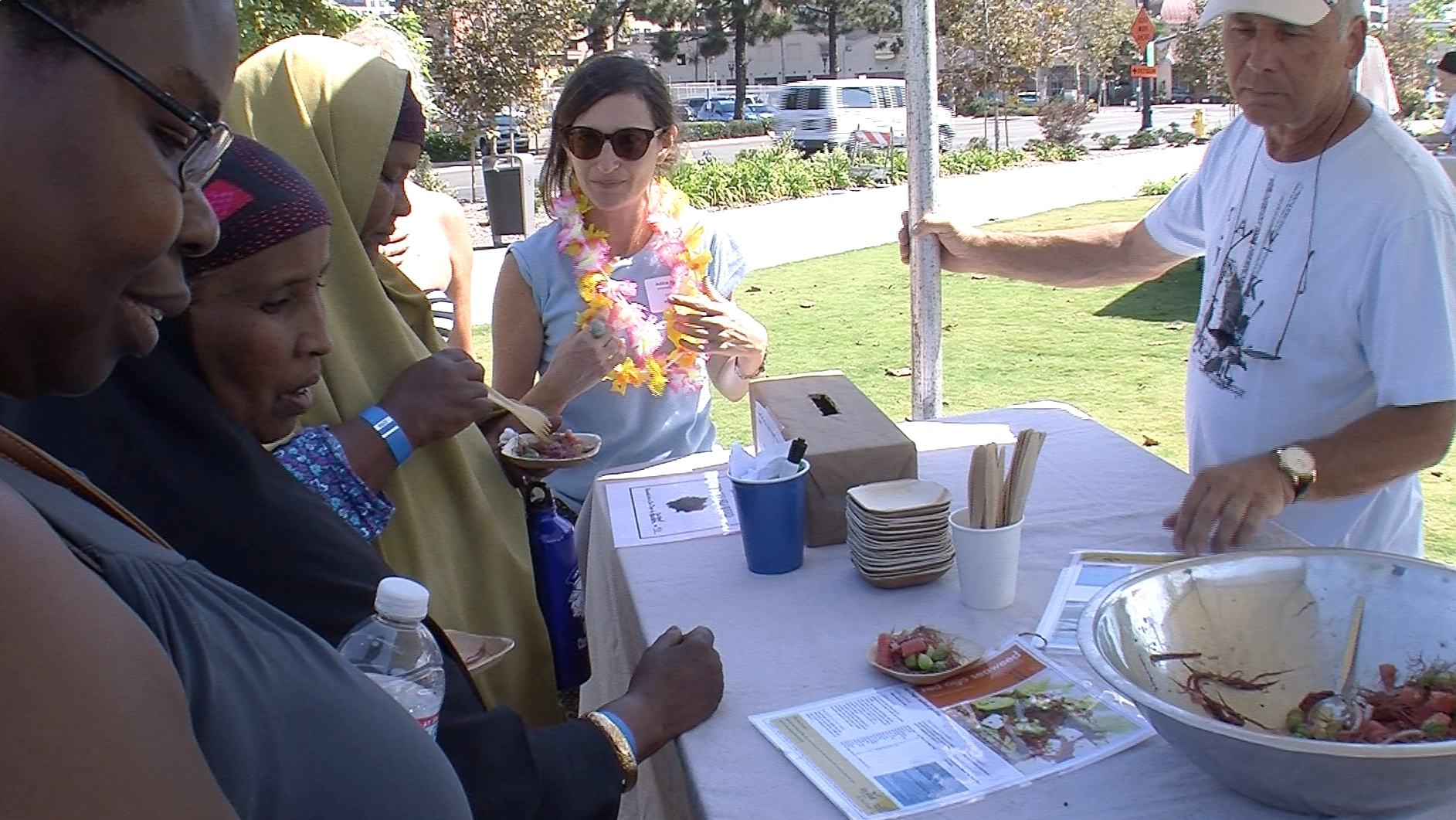
Members of the United Women’s East African Support Team have joined fishermen in trying to increase access to local seafood. The women, who fled coastal towns in East Africa, say reintroducing fresh fish into their diets would help with the chronic diseases many refugees develop when adapting their diets to the U.S. food system. | Photo Credit: Megan Burks
By Megan Burks
Japanese, Portuguese, Italian and Mexican immigrants helped make 1950s San Diego the tuna capital of the world. Their dockside fishing operations grew into companies with international reach — Chicken of the Sea and Bumble Bee Tuna. Both are still based here, but the canneries and nets were closed and cinched by the 1980s.
Now, University of San Diego and Scripps Institution of Oceanography researchers are working with fishermen to bring a bit of that maritime history back. They’re conducting a year-long study to gauge local demand for dockside fish markets. And they’re drawing on the city’s immigrants to help once more.
Refugees from coastal East Africa gathered along the harbor Saturday to taste the local catch — seaweed, sardines and sea urchin. Researchers have wrapped them into talks about the dockside fish markets because they’d make a natural customer base; they worked and shopped seaside markets back home.
It’s a healthy habit they crave here in San Diego.
“The overwhelming majority said they either eat no fish at all even though they did in their home country or it was very limited and they would go to wholesale warehouses and buy basically what the rest of San Diego does – imported stuff,” Scripps researcher Theresa Sinicrope Talley said.
The refugees are part of the United Women’s East African Support Team, which advocates for the health needs of recently arrived immigrants and refugees. Many develop chronic diseases such as diabetes and high blood pressure when they adapt their diets to the U.S. food system.
That system, Talley said, casts the majority of the fish caught here far from San Diego. Fishermen typically sell their catches to processors. Some sell at farmers markets or from the sides of their boats.
“It seems better to have a lot more of the local seafood stay in San Diego for all sorts of reasons,” Talley said. “The less distance your food travels, the lower the carbon footprint. And the more we rely on our local ecosystems for food, the higher priority they’ll become. The general public will have a raised awareness of our kelp forests and our marshes and our estuaries.”
One major hurdle in boosting the local seafood economy, Talley said, is getting the county to issue permits for fish-only markets. The county only offers permits for traditional farmers markets.
